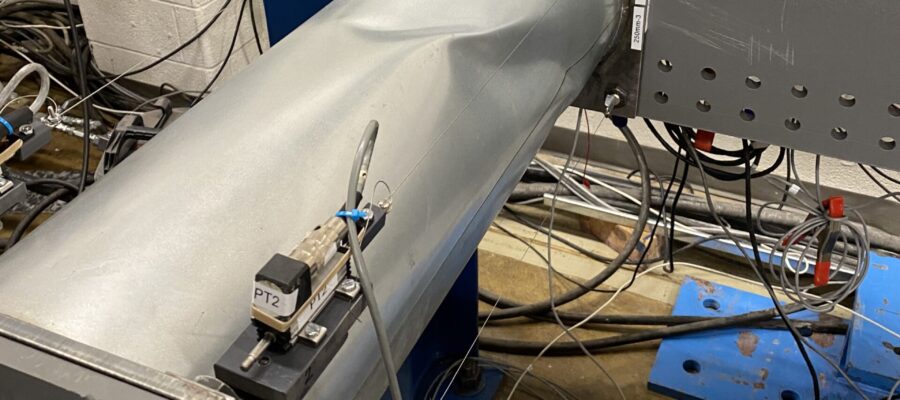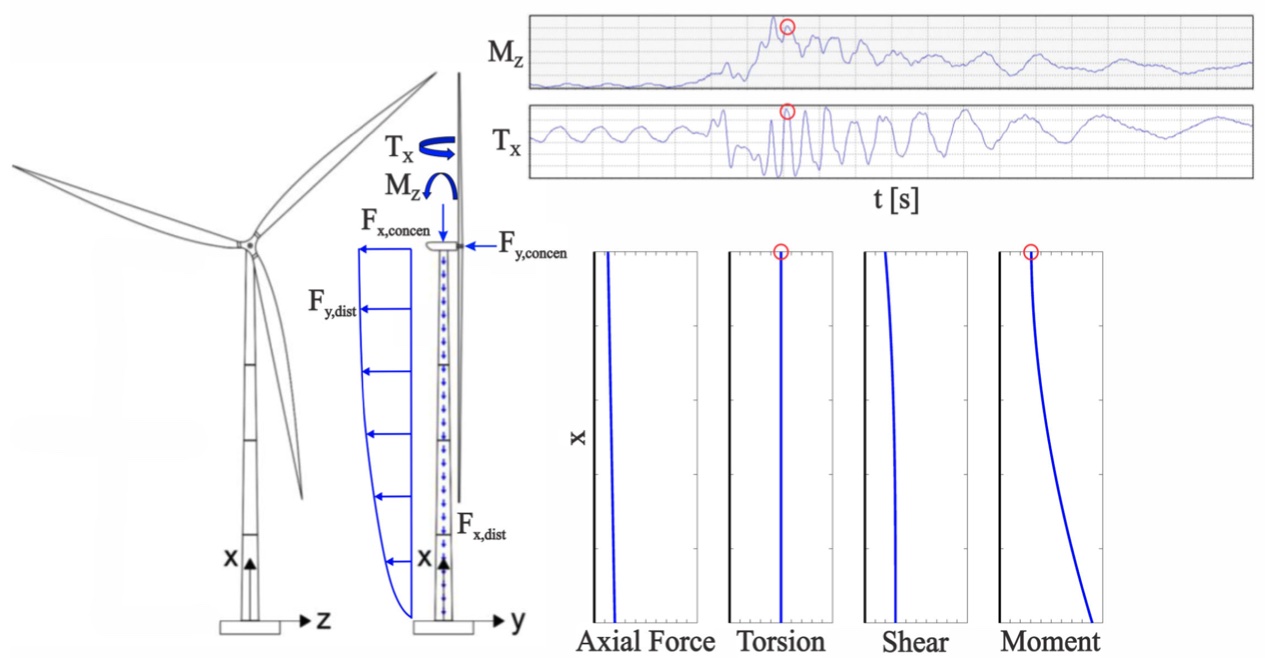New experiments from CFSRC researchers shed light on bending-torsion interaction in wind turbine towers. The tests, which were first reported at the CFSRC Colloquium, are now complete and the team is post-processing the results, including the laser-scanned initial imperfections and making final comparisons to relevant design specifications. This post will be updated when the final paper is published. This effort is just one of many underway by CFSRC to support the engineering of steel wind turbine support towers.
The crux of the issue is that as the D/t of the tower is optimized, near the top of the twoer the torsion demand comes to control the strength as the bending demand decreases. In this regime traditional stress interaction checks show torsion capacity to be larger limiting the design – tests on slender steel tubes at this D/t under bending and torsion are quite limited. Further imperfections that are known to impact short wavelength bending modes may or may not be as important for the longer and helically oriented torsional modes.
As a results of these observations new tests were conducted. In the main the tests seem to indicate that under a reasonable set of assumptions and extensions from the current Eurocode the bending-torsion interaction is reasonable captured in the tradition stress-based design. Examination of LBA/MNA, RRD, and GMNIA-based designs will follow.


